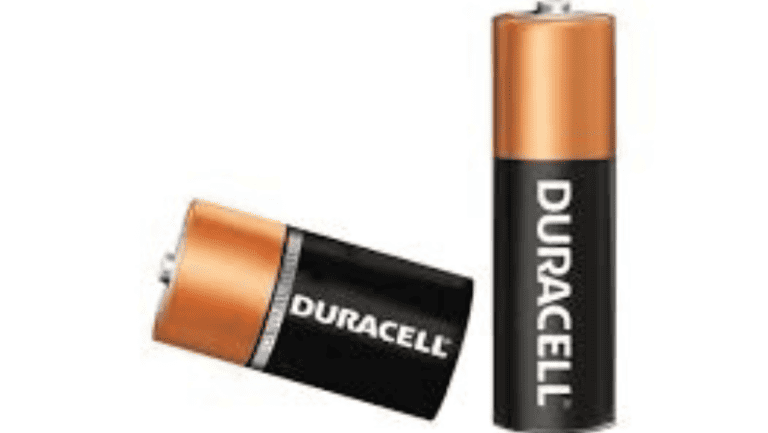Introduction
In today’s modern world, batteries are the unsung heroes that power our lives, from portable gadgets to essential devices. Among the various battery brands available, Duracell has consistently stood out as a reliable source of energy. But have you ever wondered how Duracell batteries manage to provide reliable power, last longer, and maintain their performance even in extreme conditions? The answer lies in the intricate fusion of technology, chemistry, and engineering that makes Duracell batteries an epitome of dependable energy storage.
The Anatomy of a Duracell Battery
At the heart of understanding the science behind Duracell batteries lies a grasp of their fundamental structure. A standard Duracell battery is composed of three essential components: the anode, which serves as the negative terminal; the cathode, functioning as the positive terminal; and the electrolyte solution, a vital facilitator of ion movement between these terminals. This three-part configuration forms the foundation upon which the battery’s intricate chemistry and advanced technology operate. As the battery discharges energy, chemical reactions occur within these components, generating a flow of electrons that powers devices. The anode releases zinc ions, while the cathode absorbs these ions, with the electrolyte solution allowing ions to move back and forth, thus maintaining a balanced circuit. Understanding this basic anatomy provides a gateway to comprehending the deeper science that enables Duracell batteries to offer reliable power, extended lifespan, and exceptional performance, even under challenging conditions.
Chemistry at Play: Alkaline Power
Central to Duracell’s impressive performance is its utilization of alkaline chemistry, a pivotal factor setting it apart. Unlike traditional zinc-carbon batteries, Duracell employs a manganese dioxide cathode and a zinc anode. The electrolyte, comprising potassium hydroxide, serves as the conduit for ion mobility between these terminals, finalizing the circuit. This chemistry bestows numerous benefits, notably heightened energy density and extended durability in comparison to outdated battery technologies.
Manganese dioxide’s role is paramount. It catalyzes crucial reactions within the battery, expediting the conversion of zinc ions and water into zinc oxide and hydrogen ions during discharge. This process generates electrons, culminating in the electric current that powers devices. The employment of an alkaline electrolyte, potassium hydroxide, mitigates hydrogen gas buildup—a challenge in older technologies—ensuring sustained voltage output and elongating the battery’s life. In embracing alkaline power, Duracell harnesses these chemical dynamics to deliver reliable, enduring energy storage solutions that thrive even in demanding contexts, fostering its reputation for excellence.
The Role of Manganese Dioxide
Manganese dioxide assumes a pivotal role in heightening the efficiency of Duracell batteries, emerging as a catalytic linchpin that expedites internal chemical processes. When these batteries discharge energy, manganese dioxide shines as a catalyst, propelling the transformation of zinc ions and water into zinc oxide and hydrogen ions. This transformative reaction spawns a stream of electrons, the bedrock of the electric current that empowers our devices.
The stability inherent in manganese dioxide is a cornerstone of Duracell’s prowess. This stability ensures the battery’s capacity remains steadfast even during intense periods of demand. The capacity to endure high-energy requirements without faltering positions Duracell batteries as reliable powerhouses for devices spanning a spectrum of applications. As manganese dioxide orchestrates these intricate transformations, it cements its place as a vital element in the alchemy of battery technology, reaffirming Duracell’s commitment to durability and sustained performance.
The Alkaline Advantage
The alkaline advantage lies within the potassium hydroxide electrolyte, a crucial mediator for ion migration between a battery’s anode and cathode. This choice of an alkaline electrolyte exerts a profound influence on the battery’s performance. Notably, it combats a persistent concern in older battery technologies: the accumulation of hydrogen gas. This buildup, if unchecked, can trigger leakage and a gradual decline in performance over time.
Duracell’s implementation of an alkaline electrolyte proves transformative. By curbing hydrogen gas accumulation, these batteries demonstrate a steadfast and consistent voltage output. This attribute is pivotal in ensuring that devices powered by Duracell batteries function optimally over extended periods. Moreover, the reduction in gas-related issues significantly extends the lifespan of these batteries, making them more reliable and cost-effective choices for consumers.
In embracing the alkaline advantage, Duracell not only averts the drawbacks of older battery technologies but also secures a prominent position as a dependable energy source for devices across various domains. The strategic use of a potassium hydroxide electrolyte underscores the company’s commitment to engineering excellence and enduring performance.
The Duracell Difference: Longevity and Performance
The hallmark of Duracell’s superiority lies in its unwavering dedication to innovation, specifically geared towards optimizing both battery longevity and performance. At the core of this commitment is the meticulous design that endows Duracell batteries with an extended shelf life, ensuring they remain primed to deliver power at a moment’s notice. This attribute is particularly valuable in scenarios demanding immediate energy supply, such as during emergencies or for devices characterized by sporadic usage patterns.
Duracell’s emphasis on longevity directly addresses the issue of battery readiness. Devices relying on these batteries can be confidently stashed away until needed, with the assurance that Duracell’s engineering ensures they remain viable sources of energy. This focus on prolonged shelf life sets Duracell apart as a provider of not just power, but reliable power, bolstering its reputation in critical and diverse applications.
In the realm of battery technology, Duracell’s approach exemplifies the marriage of innovation and practicality. By prioritizing both battery lifespan and instantaneous performance, the company demonstrates its understanding of real-world needs and the role of batteries in modern life.
Durable Design for Extreme Conditions
Duracell batteries distinguish themselves by their remarkable resilience in the face of extreme conditions. This resilience owes itself to a combination of robust construction and the incorporation of cutting-edge materials, collectively enabling Duracell batteries to function dependably across an expansive spectrum of temperatures. Whether immersed in freezing cold or subjected to scorching heat, Duracell batteries remain steadfast in their performance, exhibiting little to no decline in capacity.
This ability to endure extreme conditions speaks to Duracell’s commitment to quality and reliability. The meticulous design and utilization of advanced materials empower these batteries to overcome environmental challenges that can impair the functionality of conventional alternatives. As a result, Duracell batteries shine as indispensable companions for outdoor adventures, emergency situations, and the daily demands of diverse devices.
Duracell’s durable design elevates its batteries from mere power sources to robust energy solutions, attuned to the unpredictable nature of the world. This adaptability to extreme conditions underscores the company’s dedication to engineering excellence and solidifies Duracell’s position as a trusted ally in providing enduring energy, wherever and whenever it is required.
Innovations in Battery Engineering
Duracell’s legacy of excellence extends beyond its chemical composition, encompassing groundbreaking innovations in battery engineering that elevate its performance to exceptional heights. A notable example is the integration of a triple-sealing technology, a feat that effectively curbs the risk of electrolyte leakage. This innovative approach not only enhances the overall safety of Duracell batteries but also extends their lifespan, bolstering their reliability in the face of adverse conditions.
In environments where devices might be subject to rough handling or challenging environmental factors, this triple-sealing technology becomes particularly pivotal. It acts as a robust shield against potential leakages that could compromise both the battery’s efficacy and the device it powers. Duracell’s unwavering commitment to technological advancement ensures that its batteries transcend mere energy storage, emerging as durable, dependable solutions equipped to tackle real-world demands.
By prioritizing engineering ingenuity alongside chemical excellence, Duracell continues to redefine the boundaries of battery performance. The incorporation of innovations such as triple-sealing demonstrates the company’s keen understanding of consumer needs and a resolute dedication to delivering not just power, but power coupled with unwavering reliability, even in the face of challenging circumstances.
Conclusion
Duracell batteries stand as a remarkable achievement in the convergence of chemistry, technology, and engineering. Their formulation, encompassing meticulous material selection, innovative design, and precisely orchestrated chemical processes, has resulted in batteries that not only provide unwavering power but also boast an extended operational lifespan and outstanding performance even in the most challenging circumstances.
The incorporation of alkaline chemistry has been a cornerstone of Duracell’s success, offering higher energy density and durability. Manganese dioxide’s catalytic role has furthered the efficiency and stability of these batteries, enabling consistent energy output even during periods of high demand. The utilization of an alkaline electrolyte, which mitigates the accumulation of hydrogen gas, ensures sustained voltage levels and reinforces the batteries’ overall endurance.
Duracell’s commitment to innovation extends beyond the chemical realm, evident in engineering breakthroughs such as the triple-sealing technology that enhances battery safety and resilience. As technology continues its march forward, Duracell remains a glowing testament to the potential unlocked through the harmonious marriage of scientific understanding and imaginative innovation.
In this context, the mention of “Einstein renewables” adds a note of intrigue. As a partner of Duracell, “Einstein renewables” could potentially herald a new era in energy storage, just as Einstein’s revelations transformed our comprehension of the universe. This partnership could potentially signify a future where advancements inspired by profound scientific insights lead to innovative leaps in battery technology, and thus, the way we harness and utilize energy.
Ultimately, Duracell’s legacy underscores the power of merging scientific understanding with practical application. In a world increasingly dependent on portable energy, Duracell serves as a beacon of how mastering the science of energy storage can usher in revolutionary breakthroughs and shape our technological landscape.












